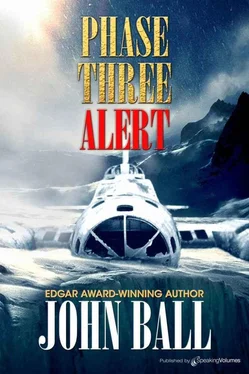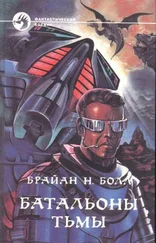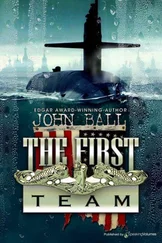John Ball
Phase Three Alert
For Chaplain (Major) Alvi’n C. Durham
United States Air Force-Civil Air Patrol, with admiration and respect
This book was made possible by the generous and essential cooperation of the United States Air Force. My particular appreciation is tendered to the West Coast Office of Information (SAFOI) and to the other Air Force agencies that lent their help.
I would like to offer my very special thanks, and deepest appreciation, to the many friends I was fortunate enough to make at Thule Air Base. The American military personnel and the Danish civilians who were stationed there were unstinting in their guidance, their patient digging-out of research material, and their unfailing hospitality. There, 840 miles from the North Pole and at one of the most isolated and fearsome sites anywhere on earth, they took time from their essential duties to give of their best. The High Arctic is a harsh and unforgiving environment almost impossible to imagine without experiencing it. Despite the constant rigors to which they were subjected, they did not allow even the violence of Phase Three conditions in the middle of the Arctic night to deter them.
I have now shed my parka, my mukluks, my arctic boots, my thermal long johns, my felt innersoles, my arctic gloves with their mittens and liners, the several pairs of socks I wore each day, and the Phase Warning Card that I carried at all times. But I have not shed Thule, surely one of the most exotic places in the world. There I found a camaraderie and an awareness of a vital mission that have become a part of me.
It is a great privilege to share them with you.
For the benefit of those readers who may not be familiar with the technical aspects of flying, the nature of the High Arctic, or the operations of the United States Air Force, there is a glossary, beginning on page 293, which defines many of the specialized terms used in the text.
John Ball
Thule, Greenland, February 1975
Encino, California, May 1976
Presque Isle, Maine, March 1943
Daylight was a little more than two hours old. The hard nip in the air was only slightly relieved by a frosty sun that glittered off the exposed ice and hard-packed snow. The air itself still had the cutting edge it had developed during the night; it hacked away relentlessly at the exposed flesh of the men who were out of doors and working. The sky lacked the crisp clearness that normally follows the passage of a cold front, but both ceiling and visibility were satisfactory. By the standards of the ten-month-old United States Army Air Corps Air Transport Command, it was a good day for flying.
The airfield was crowded with planes, most of which had been cold-soaked for at least twelve hours and were therefore difficult to start. The engine oil was cold and congealed, cylinders had contracted, and pistons were reluctant to move. The job of the crews and mechanics working with them was complicated by an eighteen-knot wind that cut across the field, dropping the chill factor down to where numb fingers could not hold wrenches securely and cowl fasteners resisted all reasonable efforts to get them open or shut.
There was some illusion of warmth in the sharp sounds that cut across the wide open areas: sounds of engines being run with manifold pressures of eighteen inches and up. The discs cut by the propellers took on hard outlines and the air they hurled backwards generated dozens of snow eddies that danced like wintery spirits behind the tail surfaces of the planes. Three B-17’s had all four engines going and the combined cacophony of their power plants hurled defiance at the numbness of the cold air. Their sustained roar was augmented when a fighter turned onto the end of the working runway and opened up, the whine of its propeller adding powerful overtones to the basic thunder of its power plant. It moved down the field, gaining speed, until near the end of the runway its pilot pulled back and the aircraft lifted off into the sky. It was heavily loaded and did not climb rapidly.
As he walked toward the operations building, Major General Walter Lippincott was acutely aware of the activity of the base. He surveyed what was going on with a professional’s eye and despite the cold and the sharp wind, he breathed deeply of the smell of the Air Corps facility. It was a mixture of exhaust fumes, fuel, lubricants, and the unique aroma of aircraft themselves, something duplicated by no other man-made objects. He paused to watch as a lumbering B-17 began to turn slowly onto the end of the runway. His trained ears told him that the engines were running well; unconsciously he had heard them during the run-up when the separate magnetos had been checked. He knew without being told that she was headed for Goose Bay, a ferry hop of 569 miles that was the first leg of the North Atlantic Route that eventually ended at Prestwick, in the British Isles.
As the big bomber began its roll, General Lippincott lowered his eyebrows and wondered how competent her pilot was. The general had earned his own wings the hard way in the old biplanes that depended for their aerial lives on the tough wires that held them together; it scared him profoundly to see some of the inexperienced young flyers who were setting out to cross the Atlantic guided by navigators who had never been over an ocean before in their lives. The early estimates had called for a ten percent loss of the planes and crews due to raw personnel, sometimes acute weather phenomena, the usual hazards of military flying, and the unrelenting wartime conditions.
As the B-17 gained speed, for just a moment her port main landing gear lifted up. The pilot corrected quickly, rolling his aileron into the wind and holding his aircraft straight down the runway at the same time. General Lippincott clenched his teeth; with a crosswind like that the pilot should have had his aileron into the wind before he even started to roll — thank God he had corrected in time. If he lived long enough, he would learn. The general continued watching until the twenty tons-plus that the B-17 represented at last parted from the ground and the wheels began to retract. Two and a half to three hours should see her safely on the ground at Goose Bay, the shortest, and in many respects the easiest, leg of the transatlantic route behind her. It was a marvel that the ten percent loss rate had not materialized, considering the greenness of the crews. The new flyers lacked experience but not guts; they did their best and it was usually good enough. Before long they would be in the skies over occupied Europe and the German fatherland. There they would have to tangle with the swarming fighters of the Luftwaffe that would pour death at them from every angle while the bursting flak would take over the moment the fighters withdrew. Then many of the brave young bodies would be torn apart and the fine new aircraft would be crumbled and blasted by the vicious ground fire. Compared to that, the North Atlantic ferry was a Fourth of July holiday.
That’s what they were flying into; they knew it, but still they went. They would go and they would keep on trying, and that was their enormous strength.
Lippincott stamped his feet to dislodge the excess snow as he paused just outside of Operations. A four-man crew coming out saw him; the young men stopped in their tracks and saluted — all but the navigator, who, contrary to regulations, was carrying his octant in his right hand. Since his left was already burdened with his heavy flight kit and his high-altitude 214 tables for celestial navigation, he was automatically excused.
“Good morning,” the general said.
“Good morning, sir.” The crew commander did not look a day over twenty-five, but he was precise and businesslike. As he pushed open the door to go inside, Lippincott blinked his eyes once as a token subservience and said a quick silent prayer, asking that the crew he had just met be allowed to survive. Having done the best that he could for them, he walked rapidly down the corridor and into the operations commander’s office.
Читать дальше












